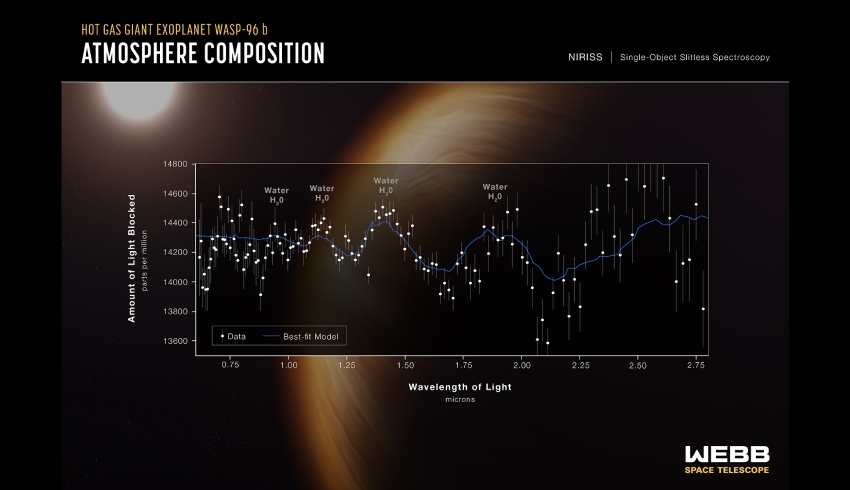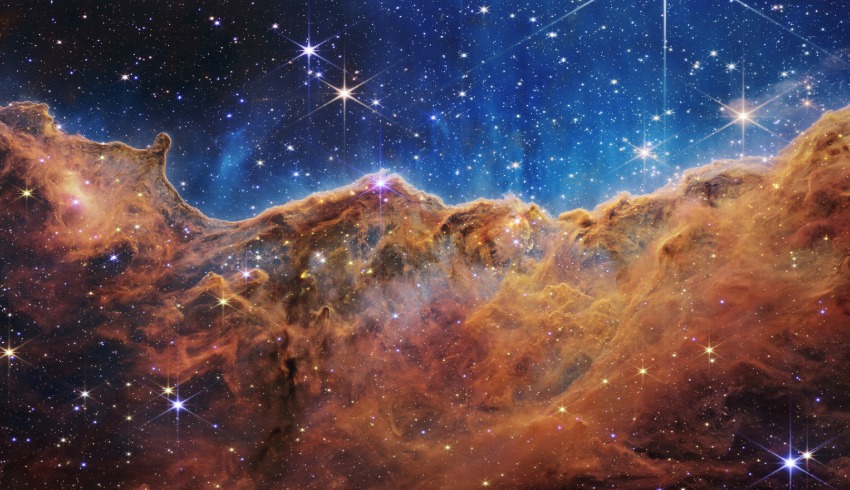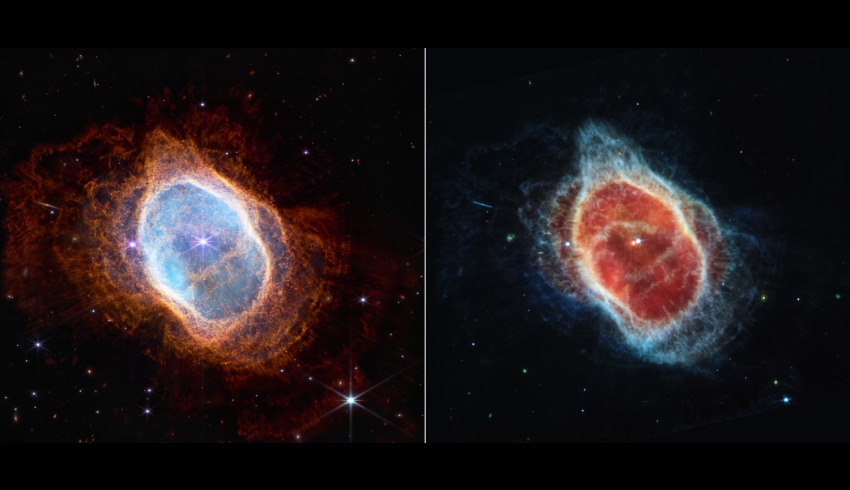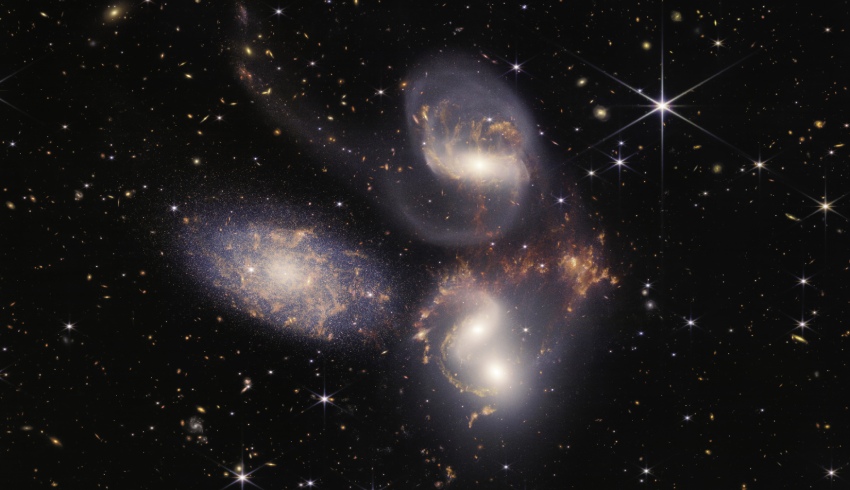The photos came a day after President Joe Biden unveiled a “preview” image of the SMACS 0723 galaxy cluster from the White House. The targets of the images released this morning were:
- the Carina Nebula;
- the Southern Ring Nebula;
- Stephan’s Quintet;
- WASP-96b.
The Carina Nebula, above and in high-resolution here, is one of the most well-known Nebulae in our night sky, being one of the largest and brightest. It is located around 7,600 light-years away in the constellation of Carina. The Carina Nebula is a “stellar nursery’” and is home to numerous massive stars significantly larger than our own sun.
Described as “Cosmic Cliffs” by NASA, the images show a vista of “mountains” and “valleys” which is a massive gaseous cavity within the Nebula. The cavity in the Nebula wall is caused by “stellar erosion” from several young stars emanating intense ultraviolet radiation and severe stellar winds.
The Southern Ring Nebula, below, is also known as the “Eight-burst” Nebula and is a planetary nebula, which is a cloud of expanding gas that surrounds a dying star. The Southern Ring Nebula is located at a distance of approximately 2,000 light-years away from Earth.
The Southern Ring Nebula consists of two dying stars locked in a tight orbit which have been shedding clouds of gas and dust for thousands of years. NASA says the details revealed in these images will “help us better understand how stars evolve and transform their environments”.
Stephan’s Quintet, located within the Pegasus constellation about 290 million light-years away, was the first-ever “compact galaxy group” to be discovered in 1877. The Quintet involves five galaxies in close proximity, with two of the galaxies actively colliding. The image of the Quintet below, is the largest of the images released by the JWST, containing over 150 million pixels and was constructed from nearly 1,000 separate images.
The image has revealed closer details of several features of the Quintet such as the supermassive black hole within the topmost galaxy in the image, NGC 7318, which is actively attracting cosmic material and emitting “light energy equivalent to 40 billion suns”.
The final target for JWST is the exo-planet WASP-96b, which is a gas giant planet nearly 1,150 light-years away from Earth. Discovered in 2014, the planet bears some similarities to Jupiter, although it has about half of the mass.
The spectrum image, below, of the exo-planet will allow astronomers to study the chemical composition of the planet and begin the exciting research of studying the atmosphere and searching for signs of life upon the planet.

The telescope – known as the spiritual successor to Hubble – launched on Christmas Day in 2021 and has completed six months of preparatory work including calibrating its instruments and aligning its mirrors.
“Today, we present humanity with a groundbreaking new view of the cosmos from the James Webb Space Telescope – a view the world has never seen before,” said NASA administrator Bill Nelson. “These images, including the deepest infrared view of our universe that has ever been taken, show us how Webb will help to uncover the answers to questions we don’t even yet know to ask; questions that will help us better understand our universe and humanity’s place within it.
“The Webb team’s incredible success is a reflection of what NASA does best. We take dreams and turn them into reality for the benefit of humanity. I can’t wait to see the discoveries that we uncover – the team is just getting started!”
Thomas Zurbuchen, the associate administrator for NASA’s Science Mission Directorate, called the release of images a “singular and historic moment”.
“It took decades of drive and perseverance to get us here, and I am immensely proud of the Webb team,” he said. “These first images show us how much we can accomplish when we come together behind a shared goal, to solve the cosmic mysteries that connect us all. It’s a stunning glimpse of the insights yet to come.”
The first image revealed on Tuesday morning was a deep-field image of a small patch of sky containing thousands of galaxies, some up to a distance of 13 billion light-years away. The photo is a composite of multiple images taken over 12 and a half hours at multiple different wavelengths by Webb’s “Near-Infrared Camera”.

Adam Thorn
Adam is a journalist who has worked for more than 40 prestigious media brands in the UK and Australia. Since 2005, his varied career has included stints as a reporter, copy editor, feature writer and editor for publications as diverse as Fleet Street newspaper The Sunday Times, fashion bible Jones, media and marketing website Mumbrella as well as lifestyle magazines such as GQ, Woman’s Weekly, Men’s Health and Loaded. He joined Momentum Media in early 2020 and currently writes for Australian Aviation and World of Aviation.



